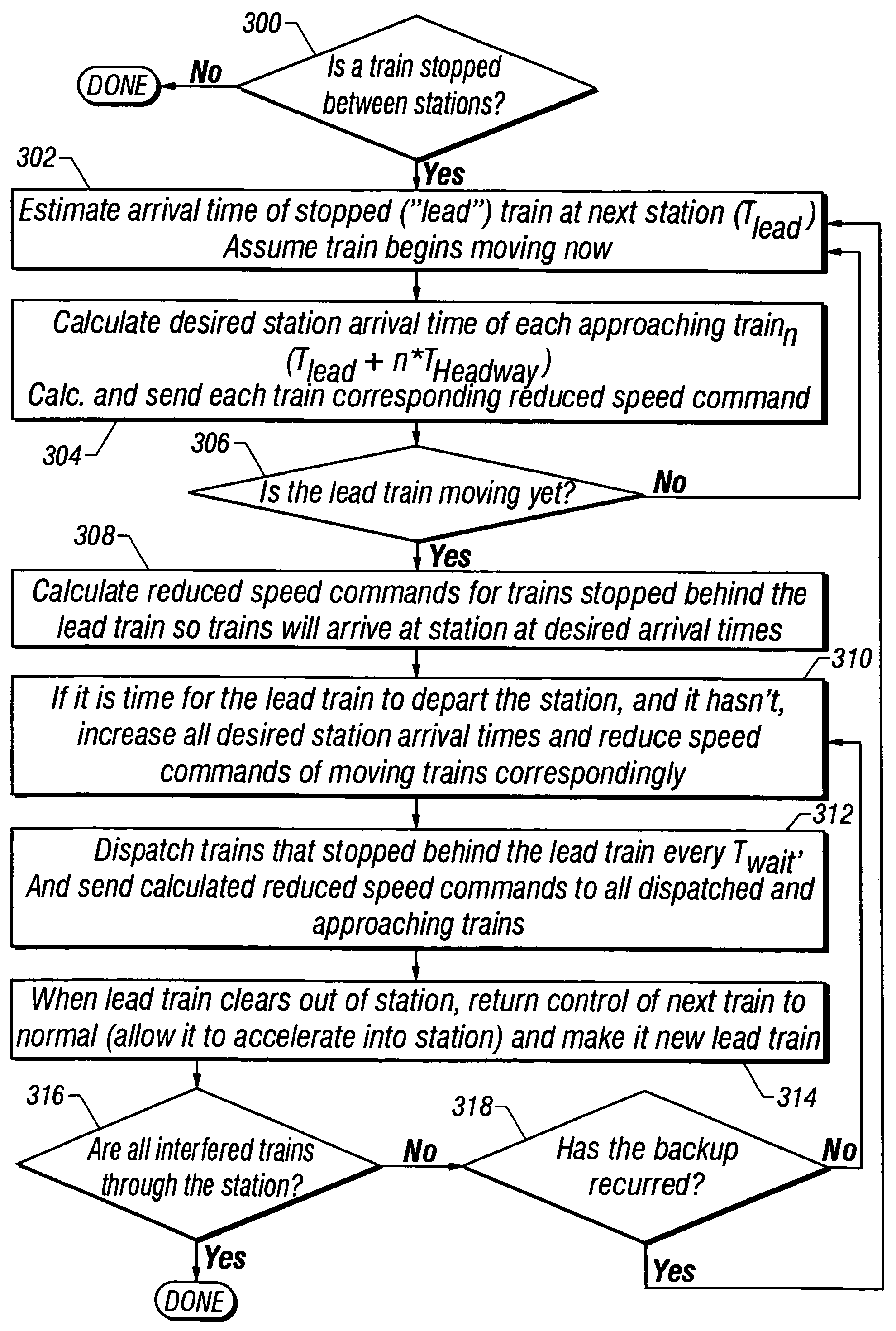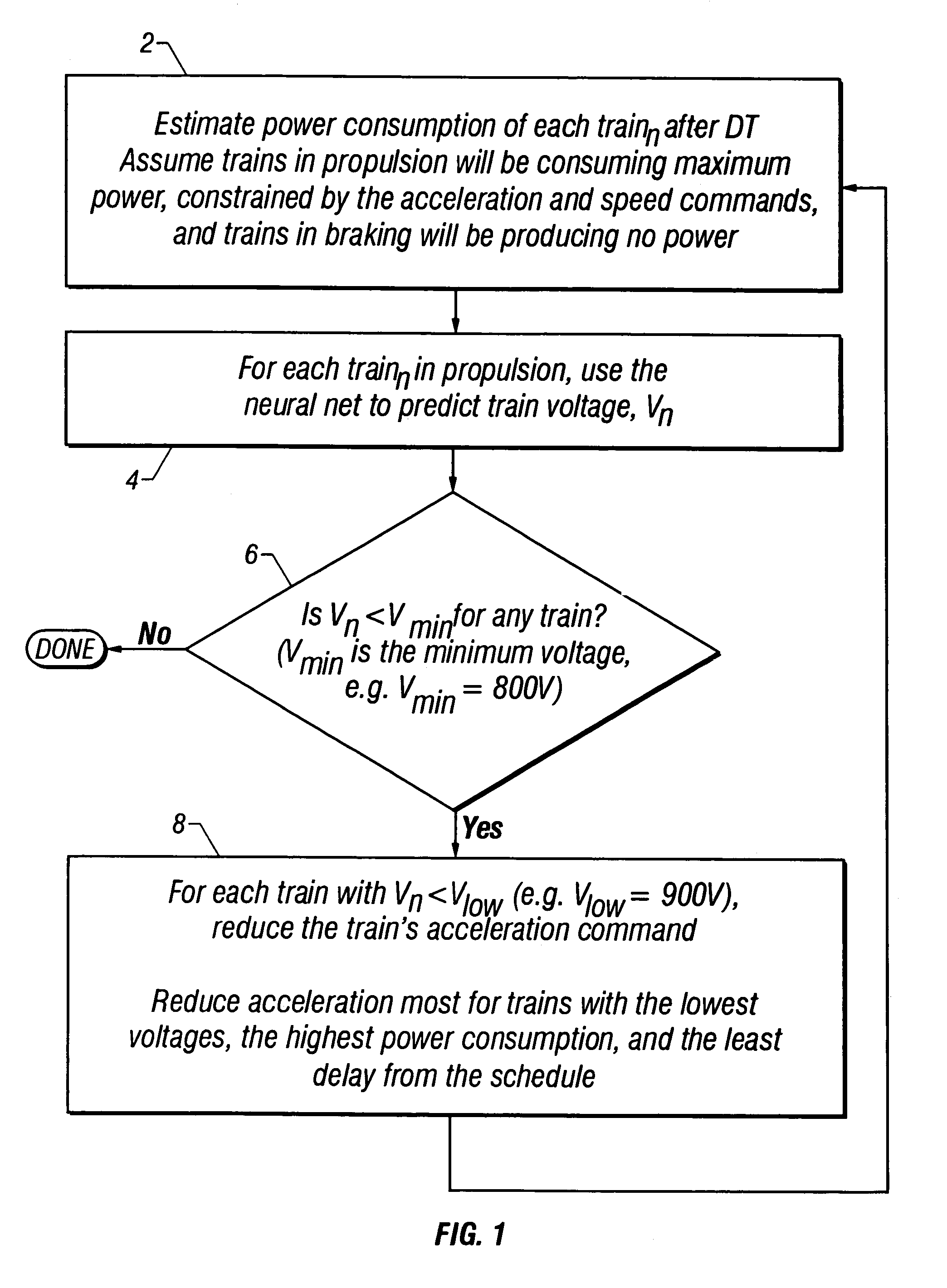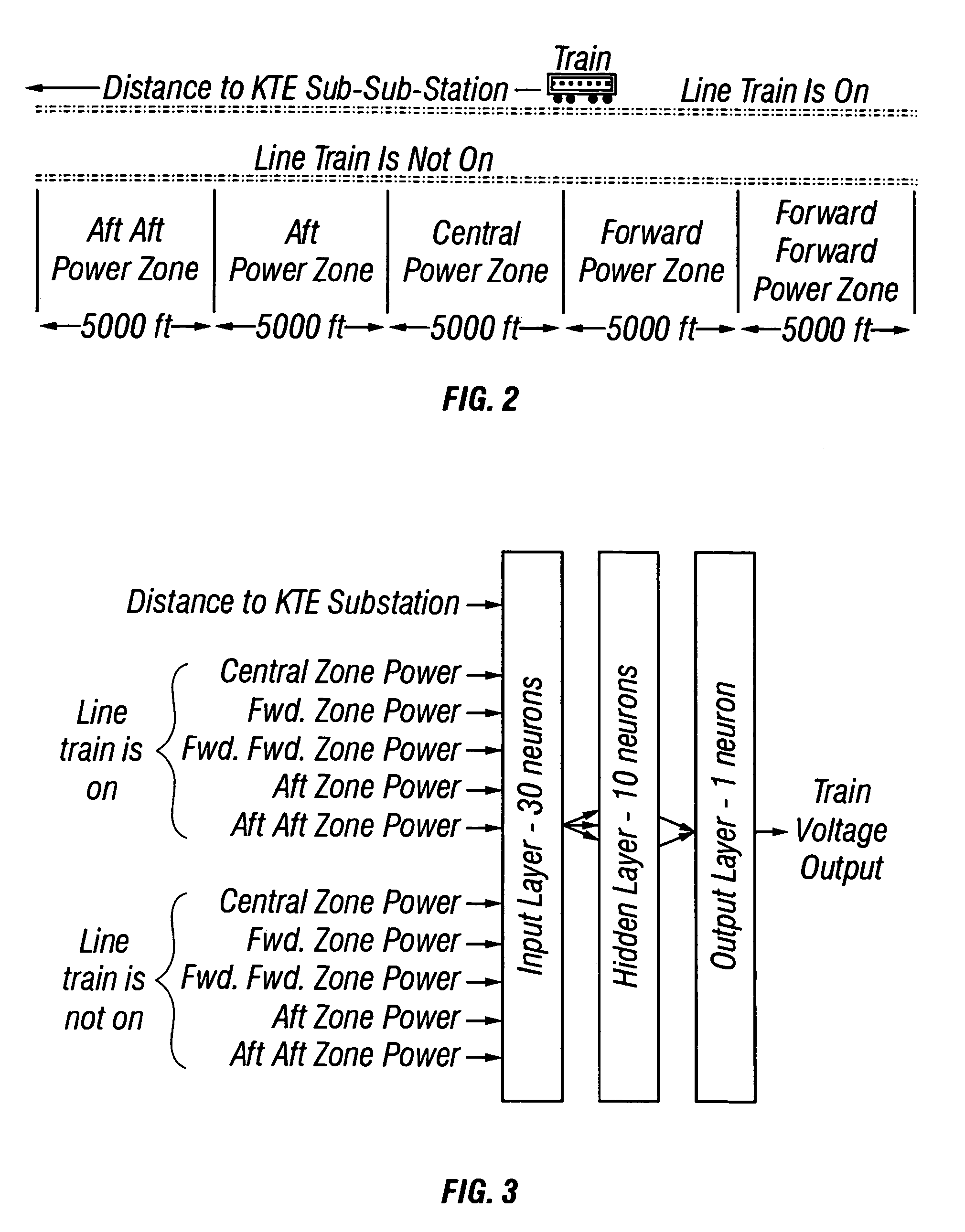Method of managing interference during delay recovery on a train system
- Summary
- Abstract
- Description
- Claims
- Application Information
AI Technical Summary
Benefits of technology
Problems solved by technology
Method used
Image
Examples
Embodiment Construction
[0036]The preferred embodiments of the present invention will now be described with reference to FIGS. 1–7, 8(a) and 8(b). The present invention is directed to methods for providing smoother train trajectories and reduced energy consumption and power infrastructure requirements by providing train control algorithms for low voltage avoidance and interference management. One skilled in the art will appreciate that various substitutions and modifications can be made to the examples described herein while remaining within the spirit and scope of the present invention.
[0037]One aspect of the present invention is to provide a method that prevents train voltages from falling below a minimum threshold in any situation. The minimum threshold voltage varies from one train system to another. The present method prevents low voltages at the trains by regulating power usage among the trains.
[0038]The present invention employs neural network technology to predict train vo...
PUM
 Login to View More
Login to View More Abstract
Description
Claims
Application Information
 Login to View More
Login to View More - R&D
- Intellectual Property
- Life Sciences
- Materials
- Tech Scout
- Unparalleled Data Quality
- Higher Quality Content
- 60% Fewer Hallucinations
Browse by: Latest US Patents, China's latest patents, Technical Efficacy Thesaurus, Application Domain, Technology Topic, Popular Technical Reports.
© 2025 PatSnap. All rights reserved.Legal|Privacy policy|Modern Slavery Act Transparency Statement|Sitemap|About US| Contact US: help@patsnap.com



